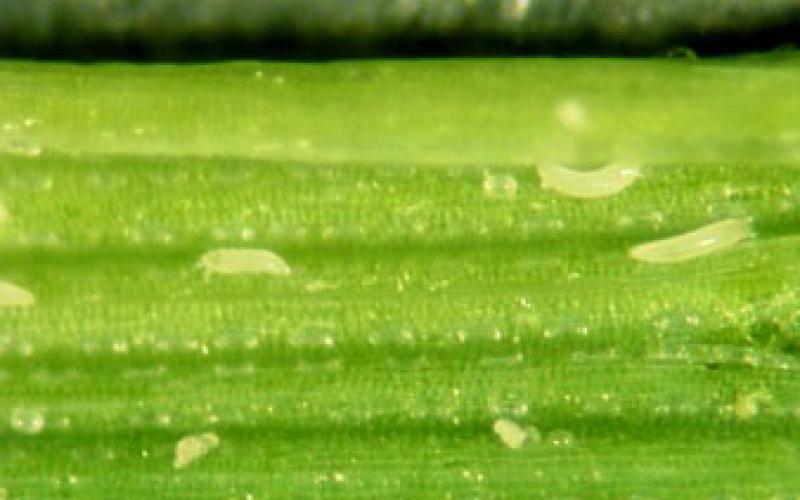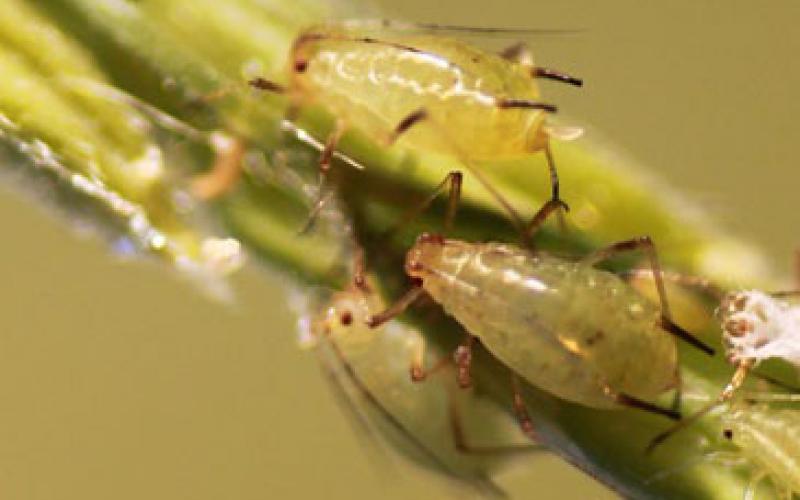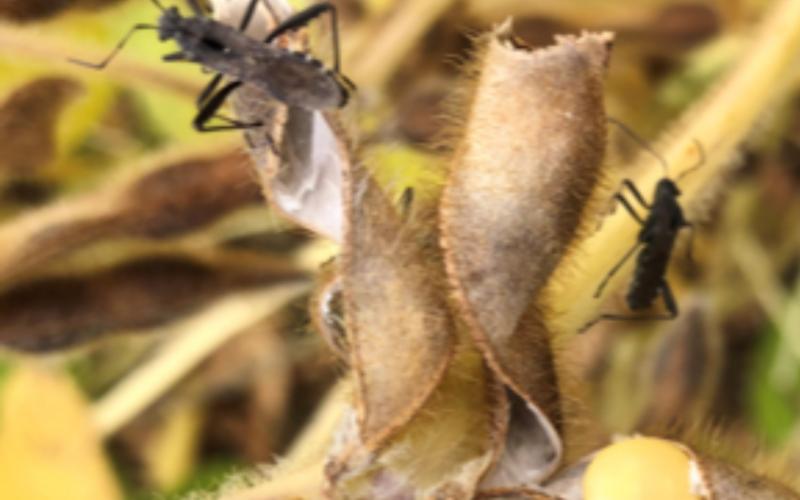Insect & Pests
All Insect & Pests Content

Brown Wheat Mite Affecting South Dakota Wheat
Recently, there have been reports of brown wheat mites throughout central and western South Dakota. The brown wheat mite is generally more of an issue in the drier parts of the state, or in areas experiencing drought. The feeding injury caused by these mites leaves white or brown spots that are referred to as stippling.

Which mite is it? Identifying the mites in wheat fields
In South Dakota, the most commonly encountered mites in wheat are wheat curl mite and brown wheat mite. In addition to feeding, wheat curl mites are vectors of Wheat streak mosaic virus. Brown wheat mites can build up large populations and injure wheat through feeding. There are other species of mites that may also be observed in wheat, but generally do not reach populations large enough to cause significant injury.

Continue Scouting Wheat for Aphid Populations
Aphid populations in winter wheat continue to be observed in South Dakota. The major questions now are whether or not aphid populations are at economic threshold and if spraying is really necessary.

Monitor Canola Fields for False Chinch Bug Activity
While scouting canola this week, I came across a field that had plants along the edge that looked like they were suffering from drought stress, but given the recent rain I doubted that to be the case. Closer inspection of the stressed plants indicated that they were covered in false chinch bugs. Although false chinch bugs are not normally an issue in canola, very large populations do have the potential to reduce yield.

Differentiating Two Species of Sunflower Seed Weevils
While scouting sunflower, there are two types of seed weevils that you may encounter. They are the red sunflower seed weevil and the gray sunflower seed weevil. It is possible to observe both of these species on a single sunflower head.

Watch for Red Sunflower Seed Weevils
In South Dakota, sunflower flowering is well underway. That means it is time to start scouting fields for red sunflower seed weevils. During the last two years, red sunflower seed weevil populations have been higher than normal with areas that exceeded the thresholds by as many as 300-500 adults per sunflower head.

Should I Be Concerned About Grasshoppers When Planting Winter Wheat?
During 2019 we have received varying reports regarding grasshopper populations. Many reports have indicated that grasshopper numbers are down. However, we have also received reports of very large grasshopper populations in some areas of South Dakota. So why such a difference?

Broad-Headed Bugs in Soybean: Should You Be Worried?
This week we received a report of insects infesting a soybean field. However, they weren’t insects that we generally think of when the term "soybean insect pests" comes up.

Western Bean Cutworm Moths Observed in South Dakota
Over the weekend, South Dakota experienced strong southerly winds, which brought warm temperatures to the state. In addition, these winds also brought insect pests north, which included moths of the western bean cutworm.

Low-Level Aphid Populations Present in Wheat
Reports of aphid populations in wheat fields have been slowly increasing in the past week. Most of these populations are well below the economic threshold, but there is a potential for them to increase.